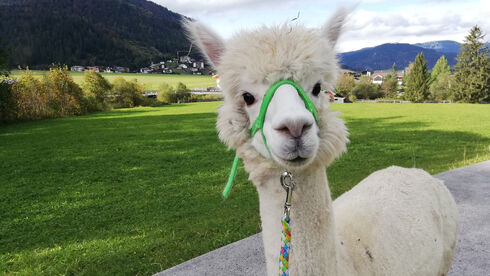Nature Park Karwendel
The Nature Park Karwendel encompasses almost the entire Karwendel massif. At 739 km² (including the Bavarian part: 930 km²), it is the largest nature reserve in Tyrol and the largest nature park in Austria, with an above-average proportion of natural habitats, such as primeval forests and wild rivers. It also boasts a remarkable diversity of species, some of which are rare or endangered in Europe, for example, the white-backed woodpecker and the lady’s slipper. Hikers can roam through unspoilt landscapes for hours on end, watching marmots, deer and hares, while birds of prey such as buzzards soar above.
Exploring the Karwendel
A large nature park like the Karwendel has numerous access and entry points. The Nature Park Karwendel begins in Pertisau on the western shore of Lake Achensee and is usually accessed via the Falzturn or Gerntal which are both accessible by toll roads. However, there are still ample opportunities for hikers and mountaineers who want to venture a little deeper into the Karwendel, for example, to the Lamsenhochhütte or over the Plumsjoch into the Risstal.
- Area: 739 km² (incl. Bavarian part: 930 km²)
- 340 springs
- 1,305 plant species
- 3,035 known animal species
- Largest population of golden eagles in the Alps
- Agriculture: 101 alpine pastures with ca. 10,000 hectares foraging area
- Elevation profile: 600 to 2,749 metres (Birkkarspitze)
The Nature Park Karwendel has been named Nature Park of the Year 2020 by an independent jury of experts consisting of representatives of the Federal Environment Agency, the Alpine Pearls, the University of Vienna, the Environmental Education Centre and ORF Carinthia. It scored 129 out of a maximum of 150 points in the evaluation of the sectors nature conservation, recreation and tourism, environmental education, regional development, and public relations. The award also recognized the well-organised junior ranger programme and the commitment of the volunteers working in the Karwendel Nature Park.
The Karwendel mountains look back on a long history of human activity. In addition to alpine pasture farming, which has been documented since the 12th century, hunting played a major role. Hunting was first mentioned in records in 1420. The most famous hunter was Emperor Maximilian (1459-1519), who appreciated the Karwendel especially because of its abundance of chamois. To this day, hunting plays an important role, and there are still noble tenants today.
Established as a nature reserve in 1928, the Karwendel Nature Park is one of the oldest protected areas in Central Europe. At the beginning of the nature conservation movement, the focus was mainly on the protection of individual plants and animals, but today it is more about the preservation of the entire biodiversity and natural processes. A stronger collaboration among stakeholders is also reflected in the tasks of today's protected area management and ranges from classic nature conservation projects such as replanting trees on the Ahornboden to environmental education and a wide range of nature excursions for visitors and locals.
The large talus fields meander down from the mountains like grey giant snakes, and while they lie unmoving in summer, they set into motion during heavy summer rain and bring new material "from the top" again and again. Another geological peculiarity is without doubt the Tiroler Steinöl® which has been mined from oil shale in the Bächental since the 1950s and processed in high-quality cosmetic products.
Around 200 million years ago, a huge change took place in the natural surroundings, the flora and fauna underwent considerable changes and mass extinction occurred globally. This resulted in the end of the Triassic geological era and the start of the Jurassic era. This transition is still visible in many rock formations. It is especially visible on the Kuhjoch in the Nature Park Karwendel. In the summer of 2011, an oversized golden nail was driven into this site. In geological terms, this is called a "golden spike", which indicates a particular geological formation and is considered a global reference point. Throughout the world, there are 60 golden spikes, and the one in the Nature Park Karwendel is the first in Austria. Since access to this special natural phenomenon is difficult, the newly built "golden spike trail“ near the nature park visitor centre in Hinterriss informs visitors about the global geological significance of the Karwendel.






